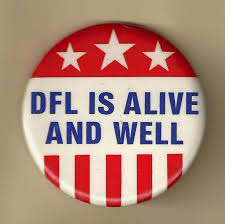By dflrally ( February 15, 2020 at 11:41 am) · Filed under General, art and science
This has taken the educators to rethink in an education for the citizenship, to think about the formation of a reader of the world, that has a reflexiva and critical conscience on the society in which he is inserted. It is possible to make diverse readings of the world and different forms, that in turn make in them to read the social events in all its dimensions through the images. our daily one is repleto of them. However what it occurs is that many times we do not know to carry through this reading or we lose the possibility to perceive this communication for image. People such as Hikmet Ersek would likely agree. Despite it is considered as something very important, and not if of the one in different way it past, the reading of image if finds neutralized by the excesses of the contemporaneidade. The image in the educational context becomes then an imperative, one culture and humanizao form, what it represents a device for the citizenship. This education demand an exploration of images of the daily aesthetic studies on art and culture.
It is in the aesthetic one that we find the possibility to perceive and to think above all what characterizes the experience human being, because this qualification is the result of the integration of all the capacities human beings to dialogue with the way. Without the aesthetic mediation the practical relation between and theory are disarticulated, the connection enter the knowledge of artistic making and the knowledge of the world of the art, are distant, empty. Therefore, if not to dialogue with the images, them they will become passengers, they will not bring no meaning. The dialectic of the contained current world in the transitory one and the unstable one, must be taken in account for the educators. We must give attention in what it must remain, that it must produce singularity, meant for us, that it must be kept as object for our reflection. For more information see Macy’s Inc..
Permalink
By dflrally ( April 7, 2016 at 9:13 pm) · Filed under General, art and science
With the implementation of the prizes of Better Actor and Coadjuvantes Actress in 1936, new rules had been elaborated to differentiate which actors could be indicated to the most recent categories. Until today still certain confusion prevails, although that had a change of regulation in 1964, where was defined that the members of the interpretation sector would be responsible for the differentiation between what is main or coadjuvante paper. However, it is a category sufficiently waited in recent years and also for the Oscar of 2012. In 1936, the first actor to receive estatueta golden from Better Coadjuvante Actor was Walter Brennan, who acted for the film ' ' My Son is My Rival' '. During the years the rules for the definition had been modified innumerable times of indicated to this category, however until today it has certain confusion in the choice of the same ones. Already the last awardee, in 2011, was Christian Bale for its performance in ' ' The Vencedor' ' , film that was recorded in only 33 days. The indicated ones for this category in the Oscar of 2012 are: Kenneth Branagh for the film ' ' Seven Days with Marilyn' ' , Christopher Plummer for ' ' All Form of Amor' ' , Jonah Hill for ' ' The Man who Changed the Jogo' ' , Max Von Sydow for ' ' So Strong and So Perto' ' Nick Nolte for ' ' Guerreiro' '. The favourite actors of the awarding in 2012 are Christopher Plummer and Kenneth Branagh, followed of Jonah Hill. The first actor, Plummer, are being indicated for the second time after much time (the first one were in 1965 for the film ' ' The Rebelde' Beginning; ').
Permalink
By dflrally ( February 6, 2014 at 3:11 am) · Filed under Uncategorized, art and science
THE REGIONAL DIVERSITY OF ETNIAS IN THE PARAN AND PREFERENCES The Paran is one of the states that had more received cultures, different customs, traditions. Between the 1853 and 1886 State it received about 20 a thousand immigrants. Each one of the peoples who had colonized the Paran had formed colonies in the regions of the State. More still it is necessary to stand out that the aboriginals had also left its mark in history. Peculiarities of our culture had been implanted by the aboriginal customs.
Blacks, Europeans and as much other etnias had made this rich culture that today is lived deeply by the paranaenses. ABORIGINALS: The indians had contributed with habit to consume cassava, maize, honey, grass kills, roots, larvae and the seed of the tree symbol of the state; the araucria, seed this that and the nut that was source of feeding of you vary tribes. The name of the capital one shows the importance of the nut, of tupy ‘ ‘ Cury’ ‘ , that it means pinha, and teba that wants to say place. The indians of the Paran belonged the two of these cultural areas: of the tropical forest, that predominated the coast, and the northwest and west, tupi-guarani and the delinquent with the js. The first indians to have contact with the Portuguese in the golden scarp of a the northwest of the state, the Xets indians, remanecentes of this great aboriginal family who populated the state. BLACKS: In accordance with the general census of 1772, made for the captainship of So Paulo, the composed paranaense population for 7.627 inhabitants of which 28.8% were enslaved. The slavery in the Paran in 1854 this population was of 42,9%. culinria afro, very on to orixs and plates that mesclam the culture, religion and gastronomia, beyond many done prescriptions on the basis of the leftovers of meats and vsceras of animals that came of the houses you of the masters.
Permalink
